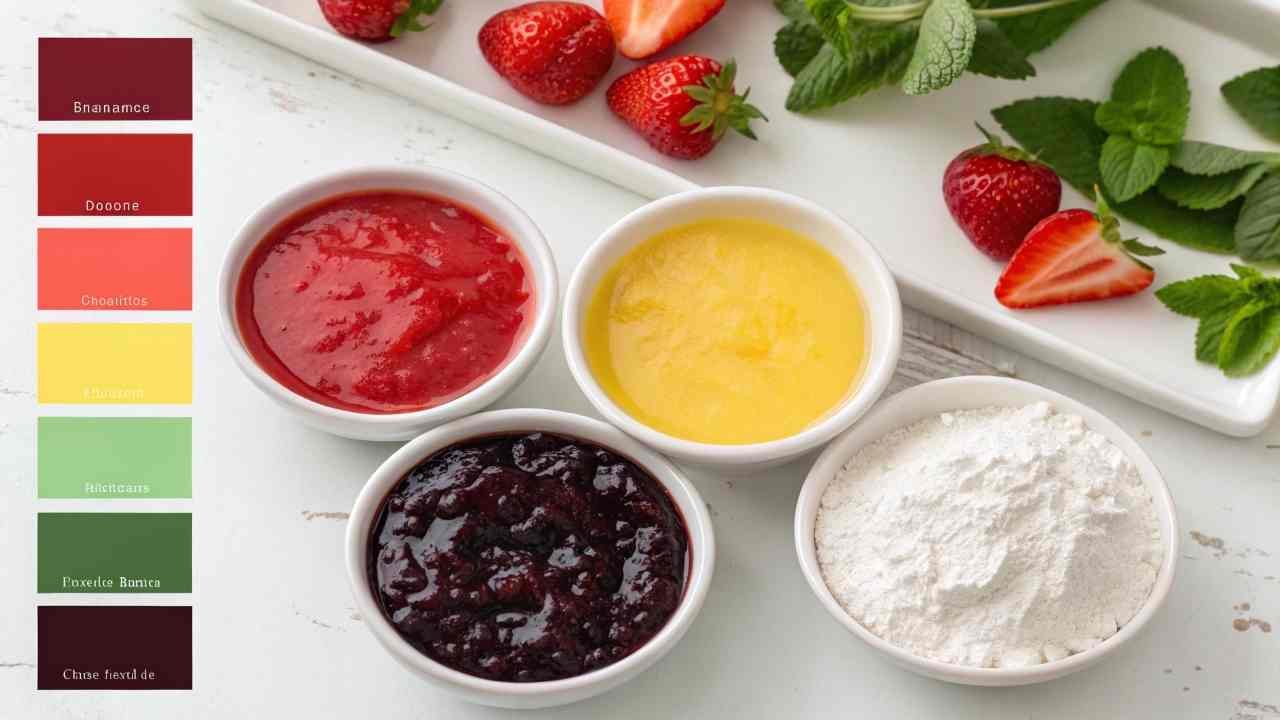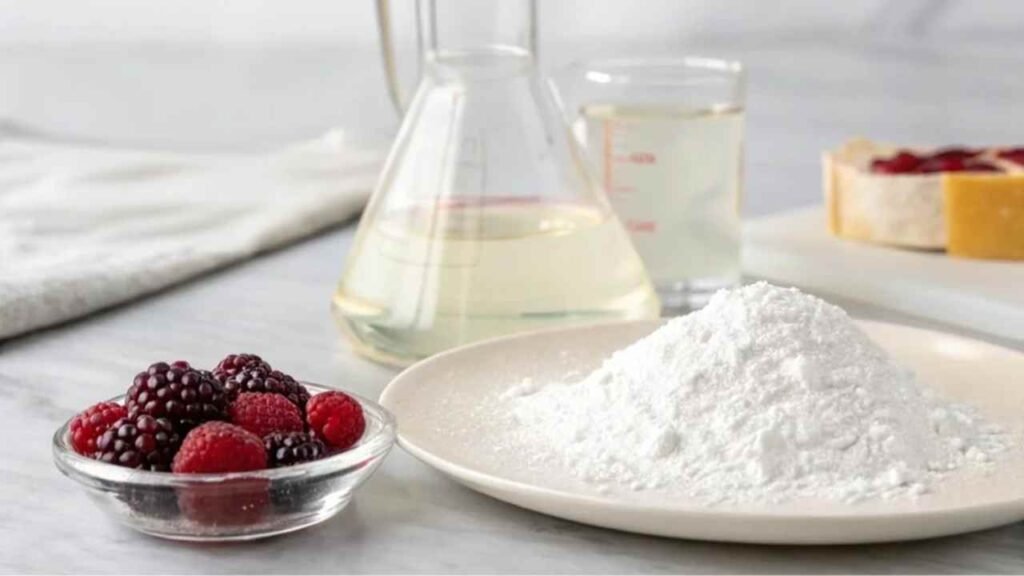Worried CMC might change your food? Need to know how it affects taste or looks? Let's quickly cover CMC's impact on food sensory qualities.
High-quality Carboxymethyl Cellulose (CMC) is virtually tasteless and odorless. Properly used, it forms clear solutions and typically doesn't change food color or clarity significantly.
At FINETECH, understanding how additives like CMC affect food is crucial. Clients need top quality without negative sensory impact. Let's quickly see how CMC performs.
Does Carboxymethyl Cellulose (CMC) itself have any flavor?
Will CMC add odd tastes to your food? Is it flavor-neutral? Let's check the taste of CMC.
No, pure food-grade Carboxymethyl Cellulose (CMC) is essentially tasteless and odorless. It doesn't add any significant flavor to foods at normal usage levels.

CMC's flavor neutrality1 is a key reason for its wide use. Its base, cellulose, is bland. The purification process for food-grade CMC removes potential off-flavors. At typical low concentrations (0.05%-0.5%), any intrinsic taste is unnoticeable. High purity, like that supplied by FINETECH, ensures this neutrality. If a flavor is noted, it's usually due to impurities or very high, atypical concentrations.
Flavor Summary:
| Aspect | CMC Detail | Impact on Food |
|---|---|---|
| Taste | Virtually Tasteless | No flavor change |
| Odor | Essentially Odorless | No added smell |
| Purity | Food-grade is highly purified | Removes off-flavors |
| Usage Level | Low | Dilutes any trace taste |
Can Carboxymethyl Cellulose (CMC) make liquids cloudy, or does it stay clear?
Using CMC in clear drinks? Worried about cloudiness? Let's see how CMC affects liquid clarity.
Properly dissolved, good quality Carboxymethyl Cellulose (CMC) usually forms clear to slightly opalescent solutions. Clarity depends on CMC grade, concentration, and proper dispersion.

Maintaining clarity is key for many products. CMC can thicken without much cloudiness if used right.
Factors:
- Grade/Purity2: Higher purity CMC = clearer solutions. FINETECH sources grades for high clarity.
- Concentration3: Lower concentrations are clearer.
- Dispersion/Hydration4: Crucial. Poor dispersion causes lumps ("fisheyes") and cloudiness. Pre-blend CMC with dry ingredients or add slowly to agitated liquid. Allow full hydration time.
For best clarity, use high-purity CMC, ensure excellent dispersion, and use the minimum effective dose.
Clarity Factors:
| Factor | Effect on Clarity | Tip |
|---|---|---|
| CMC Grade | Higher purity = clearer | Use good quality CMC |
| Dispersion | Poor = cloudy/lumps | Pre-blend, good mixing |
| Concentration | Higher = less clear | Use minimum needed |
Will Carboxymethyl Cellulose (CMC) change the original color of my food product?
Adding CMC to colorful food? Will it dull or change the color? Let's check CMC's impact on food color.
No, high-purity food-grade Carboxymethyl Cellulose (CMC) is a white powder forming colorless solutions. It generally does not alter or add color to food products.

Food color is vital. CMC powder itself is white. When dissolved, it's colorless at normal concentrations. It doesn't chemically react with or bleach food colorants. This makes it ideal for brightly colored juices, sauces, and dairy products. Any perceived color change5 is likely due to impurities in low-grade CMC or interactions with other ingredients, not quality CMC itself. FINETECH ensures strict color specs for sourced CMC.
Color Impact:
| Aspect | CMC Behavior | Effect on Food Color |
|---|---|---|
| Powder | White | No color to impart |
| Solution | Colorless | Does not add color |
| Reaction | Inert to food colors | Does not change existing hues |
How easy is it to use Carboxymethyl Cellulose (CMC) powder in home cooking or baking?
Can home cooks use CMC easily? Is it just for industry? Let's see how user-friendly CMC is at home.
Carboxymethyl Cellulose (CMC) can be used at home but needs careful measurement (small amounts) and very good dispersion (pre-blending with dry ingredients like sugar) to prevent clumping.

CMC is available in small packs for home users (e.g., for gluten-free baking, homemade ice cream, cake decorating as Tylose powder).
Challenges & Tips for Home Use:
- Measure Accurately: Use a gram scale; very small amounts are needed.
- Prevent Clumps: This is key. Thoroughly mix CMC powder with 5-10 parts sugar or flour BEFORE adding to liquid. This separates particles.
- Agitate: Sprinkle pre-blended mix into liquid while whisking or blending vigorously.
- Start Small: Overuse causes sliminess.
Used carefully, it's great for improving texture in gluten-free goods or making smoother ice cream.
Home Use Tips:
| Challenge | Solution |
|---|---|
| Measurement | Precise scale needed |
| Clumping | PRE-BLEND with sugar/flour |
| Overuse Risk | Start with tiny amounts |
Why can Carboxymethyl Cellulose (CMC) sometimes make foods feel a bit 'slimy' if not used right?
Experienced a slippery food texture? Could CMC be why? Let's understand how to avoid this "sliminess".
A 'slimy' texture from Carboxymethyl Cellulose (CMC) usually means too much was used, it wasn't dispersed well (causing lumps), or the wrong CMC grade (e.g., too high viscosity) was chosen.

CMC should create good texture, not sliminess. "Sliminess" is often due to:
- Overdosing6: Most common cause. Use minimal effective amount.
- Poor Dispersion: Undissolved lumps ("fisheyes") feel slimy. Ensure excellent mixing.
- Wrong Grade7: Using a very high viscosity CMC when only light thickening is needed can feel slimy. Choose the grade appropriate for your product. FINETECH can help select the right one.
To avoid sliminess: dose accurately, disperse perfectly (pre-blend!), and pick the correct CMC grade. Sensory testing of the final product is always recommended.
Avoiding Sliminess:
| Cause | Prevention Strategy |
|---|---|
| Too Much CMC | Use precise, minimal dose |
| Lumps/Fisheyes | Pre-blend, good agitation |
| Wrong Grade | Select appropriate viscosity grade |
Conclusion
CMC is tasteless and won't typically alter food color or clarity when used correctly. Proper dispersion and dosing are vital to avoid sliminess and harness its textural benefits.
-
Understanding flavor neutrality is essential for appreciating why CMC is widely used in food products. Explore this link to learn more. ↩
-
Understanding the role of Grade/Purity in CMC can help you achieve clearer solutions in your products. ↩
-
Exploring the relationship between concentration and clarity can enhance your formulation strategies. ↩
-
Learning about dispersion and hydration can prevent common issues like cloudiness and improve product quality. ↩
-
Understanding the causes of color change in food products can help you ensure quality and consistency in your recipes. ↩
-
Learn about the impact of overdosing on CMC to ensure optimal texture in your formulations. ↩
-
Choosing the right grade of CMC is crucial for achieving the desired texture in your products; explore this topic further. ↩


